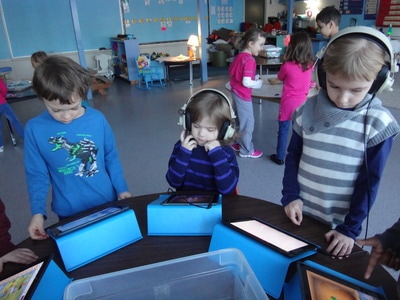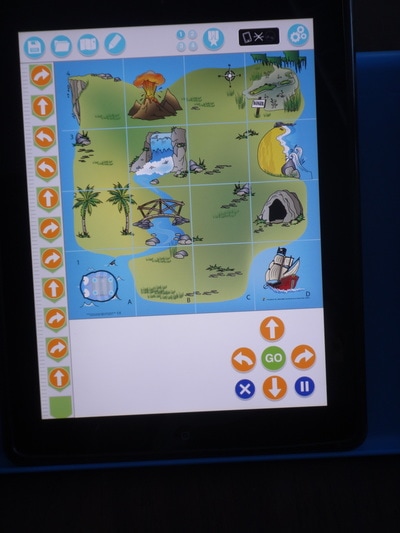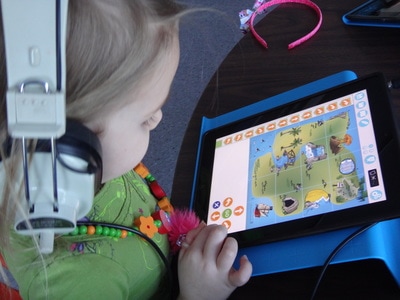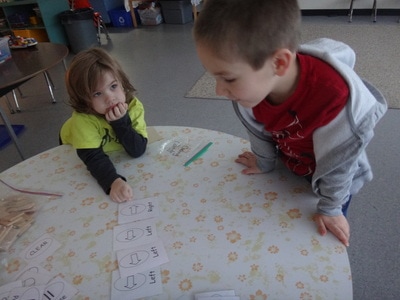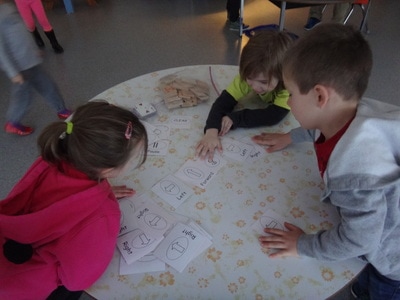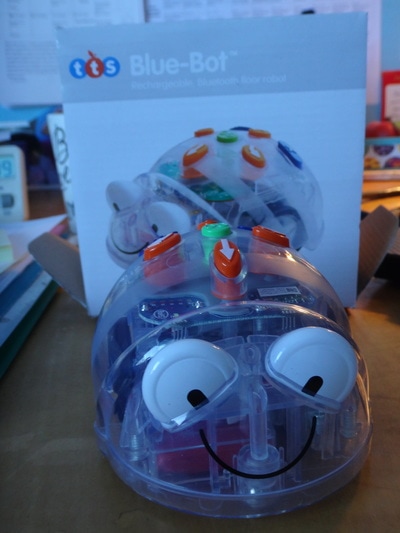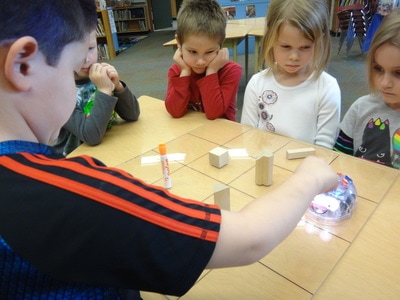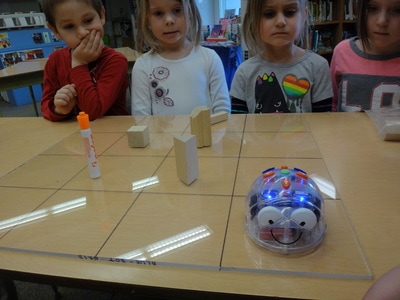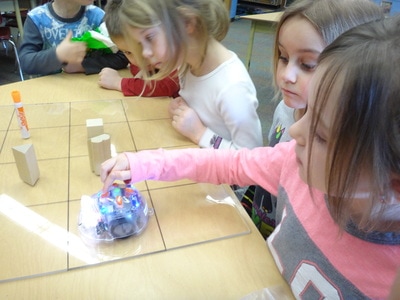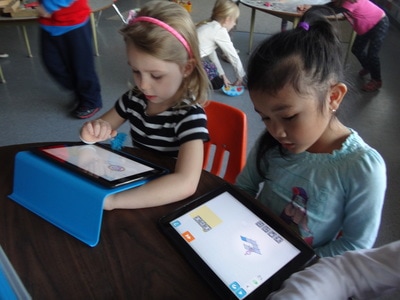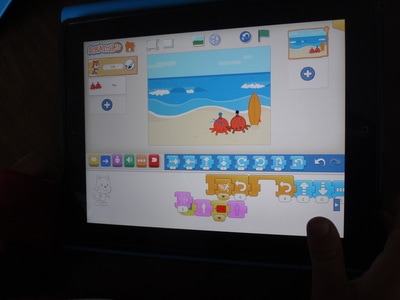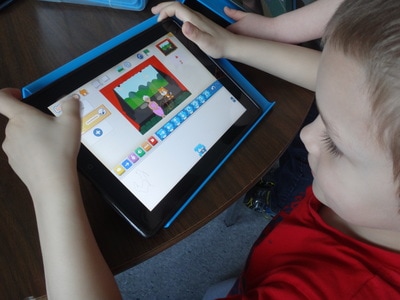 Have you heard the term 'growth mindset'? It is the idea that intelligence can grow versus the belief most of us have grown up with that it is fixed (we get the IQ we are born with). In our classroom we try to avoid saying, "I can't do it." We try to use, "I will try my best" or "I can't do it... YET". We talk about how it is okay to make mistakes because it makes our brain work harder, which causes it to grow bigger and stronger, like a muscle. And that scientists begin with a hypothesis that is often wrong and they need to rethink and revise their ideas and try again. I am trying to help Team Awesome understand that trying again- and trying new strategies- not only helps them succeed at the current task but also helps them succeed in the future by strengthening their brain. I want them to know that struggle is a chance to improve their skills and understanding, that there is value in effort and critical thinking and that growth is always possible.
For Team Awesome, learning to code *is* play. They love it. They like the challenge of creating and then executing a plan. They like the sense of accomplishment they feel when they’ve guided a little computer creature through a maze or around an obstacle. They love solving these coding puzzles with their friends and then cheering for one another as they master increasingly difficult challenges.
Coding really is a new type of literacy. As computers continue to become a more integral part of our daily lives, it’s going to become just as important to teach our children to code as it is to teach them to read. As young children code they learn how to create and express themselves with the computer, not just to interact with it. In the process, children learn to solve problems and design projects, and they develop sequencing skills that are foundational for later academic success. They also use math and language in a meaningful and motivating context, supporting the development of early-childhood numeracy and literacy. Some people don’t realize that coding is also a creative endeavor. We think of writing code as Computer Science. Science is logical and has a method. Coding is also logical, and it also has a method, but when we code, we can use the logic and method to create. We can create games, videos, websites, art and really almost anything imaginable. What’s more, we can teach this new kind of creative literacy to our youngest children. In the same way that there are developmentally appropriate ways to expose young children to reading and writing, there are developmentally appropriate ways to introduce young children to coding. Below are a few of the coding apps that Team Awesome have explored and are enjoying. Teaching programming is about teaching thinking, and I think that’s appropriate at any age. Kodable: This app is ideal for teaching young students to code. The best part about it is that it requires absolutely no reading skills. Kids propel the little fuzz balls through the maze using various commands that the app introduces over the course of the game. Some of the children are working their way through each of the levels available on the the free version. There’s a paid version with more levels called Kodable Pro for $6.99. Light Bot: The programming skills that Light Bot teaches are very manageable for the most eager students. The only downside to this app is the fact that it does require students to read, or have an adult on hand to periodically read basic instructions to them. The Hour of Code version of Light Bot is free and has 18 levels. If you max out those levels you can buy a paid version of Light Bot with 40 levels for $2.99. Scratch Jr. You can read an older (2013) New York Times article about how young children are using Scratch Jr. in the classroom here. Basically, kids organize blocks that contain commands. Those blocks, when combined appropriately, create the code for whatever it is that the child wants to create. Scratch Jr. is a little sophisticated for the Ks and we just began playing with it this spring. Blue-Bot is not only a programmable floor robot that allows the children to code, debug and plan algorithms directly on the robot, but it is also an app. The physical rechargeable Blue-Bot has a clear shell so children can see the components inside and identify how it works. It is capable of performing 45 degree turns and kids can also include repetitions of an algorithm. The app mimics the actions/ abilities of the actual robot. A Blue-Bot is not needed to use the app and while we have only played with the Blue-Bot in the library, Team Awesome often chooses to use the app on the iPads. Don't forget that Thursday's dismissal is at 12:30 due to our last parent/teacher interviews from 1:00-4:00. If you would like to see me Thursday afternoon, just let me know and we can set up an appointment time.
 Parent/ teacher interviews (I know!) are on Thursday of next week so it will be a 12:30 dismissal day. It has been under two months since the last one and spring break was in there, meaning we have had about six learning weeks, with a few short ones, since I 'officially' saw you last. If you would like to see me next Thursday, just let me know and we will make arrangements. If you would like to see me but are unable to come on Thursday, alternate arrangements can be made.
|
Mrs. Bowden &
|
